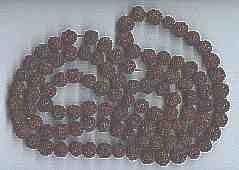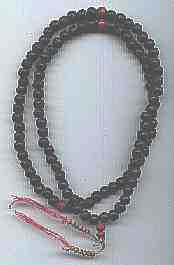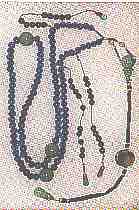The Bead SiteHome>Uses of Beads>Religion and Amulets > Hindu and Buddhist
Holy Counting Beads
Page 1 of 4
A special form of bead use is employed with strands of beads that are both sacred and perform the function of counting (usually prayers). The generic term for these is prayer strands.
|
Hindu and Buddhist
__________________________________________________
Small Bead Businesses | Beading & Beadwork | Ancient Beads | Trade Beads
Beadmaking & Materials | Bead Uses | Researching Beads | Beads and People
Center for Bead Research | Book Store | Free Store | Bead Bazaar
Shopping Mall | The Bead Auction | Galleries | People | Events
The Bead Site Home | Chat Line | Contact Us | Site Search Engine | FAQ


